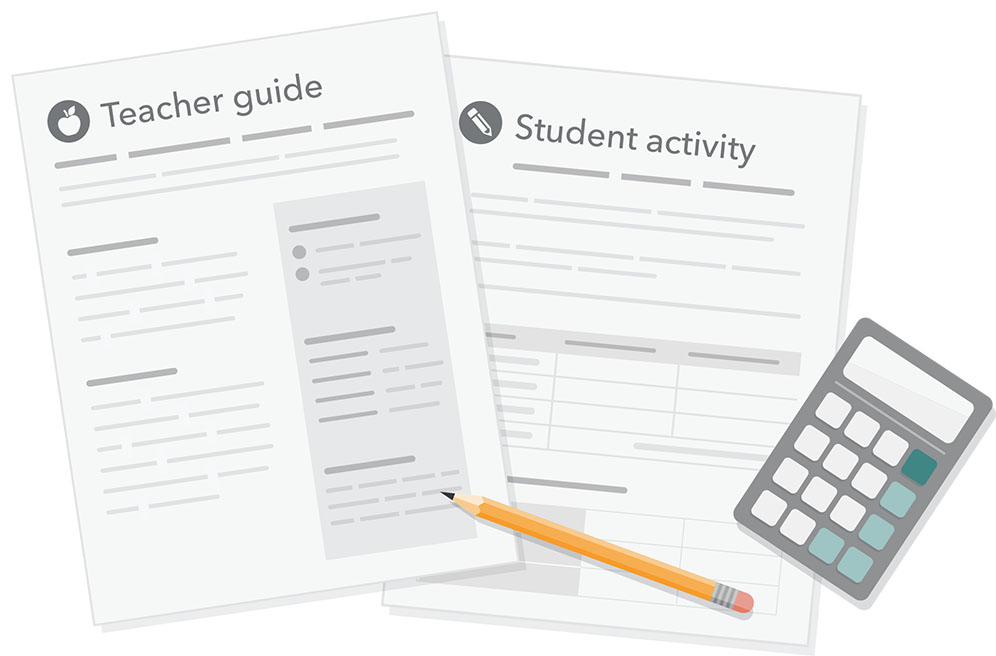Find financial literacy activities
Find activities that can help you teach and nurture the building blocks of financial capability across the curriculum.
These classroom activities can be completed within a single class period. Each activity comes with a teacher guide and supporting student material, so it’s easy to implement whether you’re an experienced personal finance teacher, integrating financial literacy into another subject area, or supplementing your existing financial education curriculum.

Search for activities
Meeting your future self
Ideal for: Elementary school (4-5), Middle school (6-8)
Students imagine their lives in 10 years and write a fill-in-the-blank letter from their future selves to their current selves.
Exploring entrepreneurship
Ideal for: Elementary school (4-5), Middle school (6-8)
Students read a book about starting a business, think of an idea for a product they can create or improve, and design a plan for selling it.
Drawing your own business comic strip
Ideal for: Elementary school (4-5), Middle school (6-8)
Students explore entrepreneurship by reading a story about entrepreneurs and drawing a comic strip about starting a business.
Exploring opportunity costs
Ideal for: Elementary school (4-5), Middle school (6-8)
Students read a book about the opportunity costs of starting a business, play a fill-in-the-blank game, and discuss things they could give up so they can have something else.
Playing a business game
Ideal for: Elementary school (4-5), Middle school (6-8)
Students read a book about starting a business and then play a game to explore things that can happen when you run a business.
Comparing higher education choices
Ideal for: Middle school (6-8), High school (9-10), High school (11-12)
Students explore higher education options by comparing similarities and differences between two colleges near where they live.
Starting your own business
Ideal for: Elementary school (4-5), Middle school (6-8)
Students practice being entrepreneurs by thinking of businesses they might start based on their own ideas, talents, or passions.
Examining elements of a paycheck
Ideal for: Middle school (6-8)
Students review a sample pay stub to understand the real-world effect of taxes and deductions on the amount of money workers take home.
Turning hobbies into earnings
Ideal for: Middle school (6-8)
After learning about the term “gig economy,” students brainstorm a list of fun hobbies or activities they enjoy doing that could be turned into money-making opportunities.
Counting cash
Ideal for: Middle school (6-8)
Students practice handling money through simulated purchases and sales transactions.
